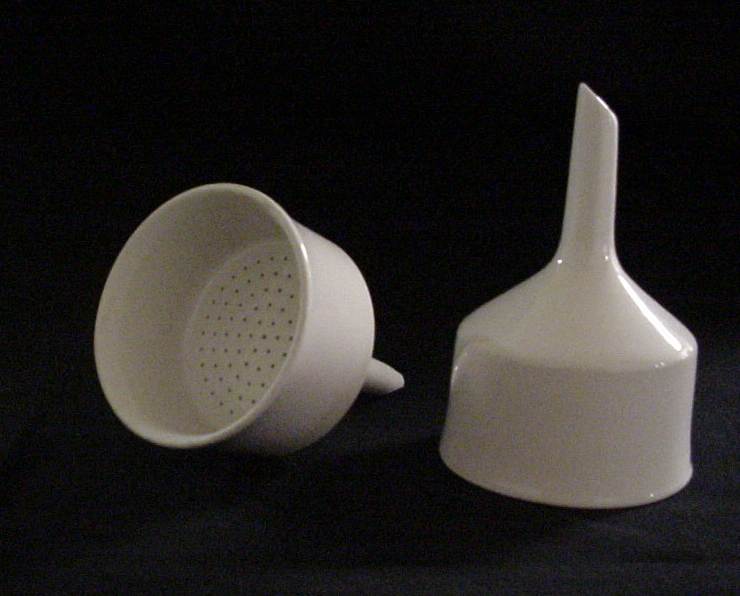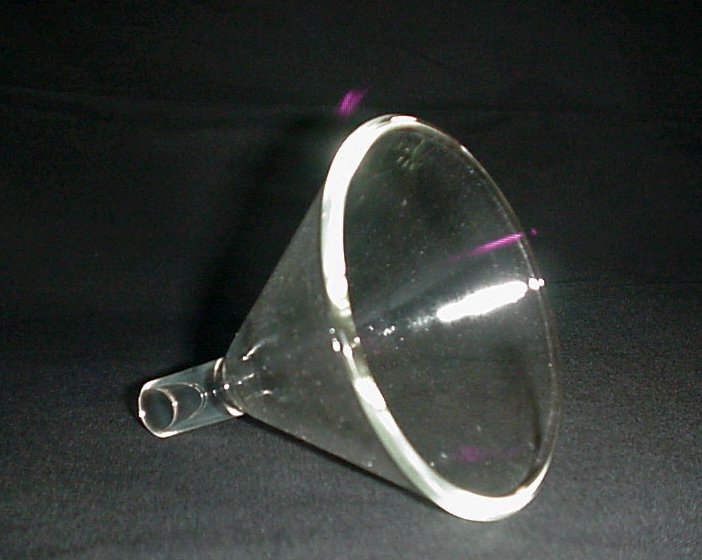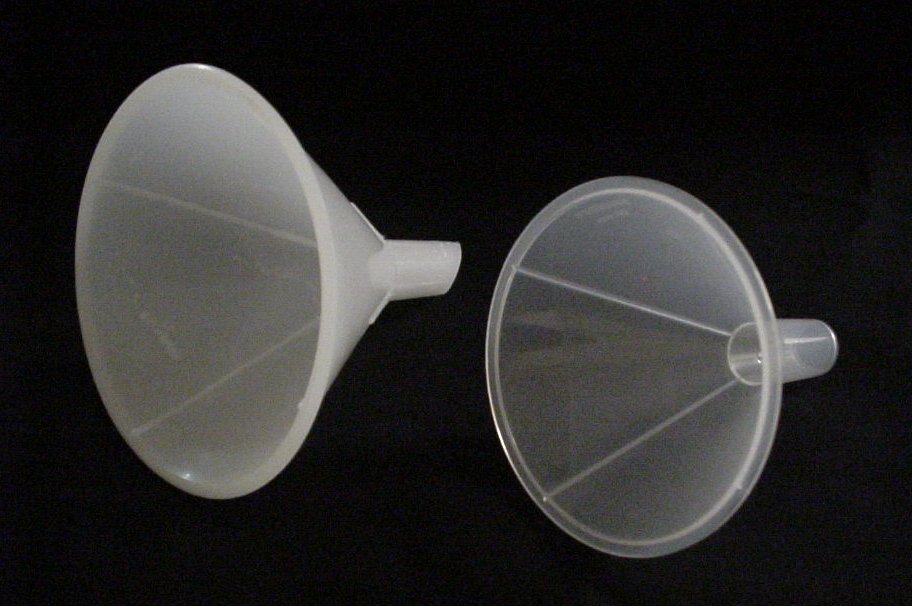Funnels
( \newcommand{\kernel}{\mathrm{null}\,}\)
| Buchner Funnel | crucible funnel | Powder Funnel | Funnel |
|---|---|---|---|
 |
 |
 |
 |
| Used for separating solid substances from solution. May be made of ceramic or plastic. | Used for filtering; the bottom of the frit is a porous glass surface, which allows material to be trapped. The ratings correspond to the pore sizes. There are other kind of funnels for filtration using filter papers. | for pouring solids into a beaker or any container. Other kind of funnels can be used to pour liquid. | for pouring liquid into a beaker. A funnel with a wide mouth is used for solids and is called powder funnel. |


